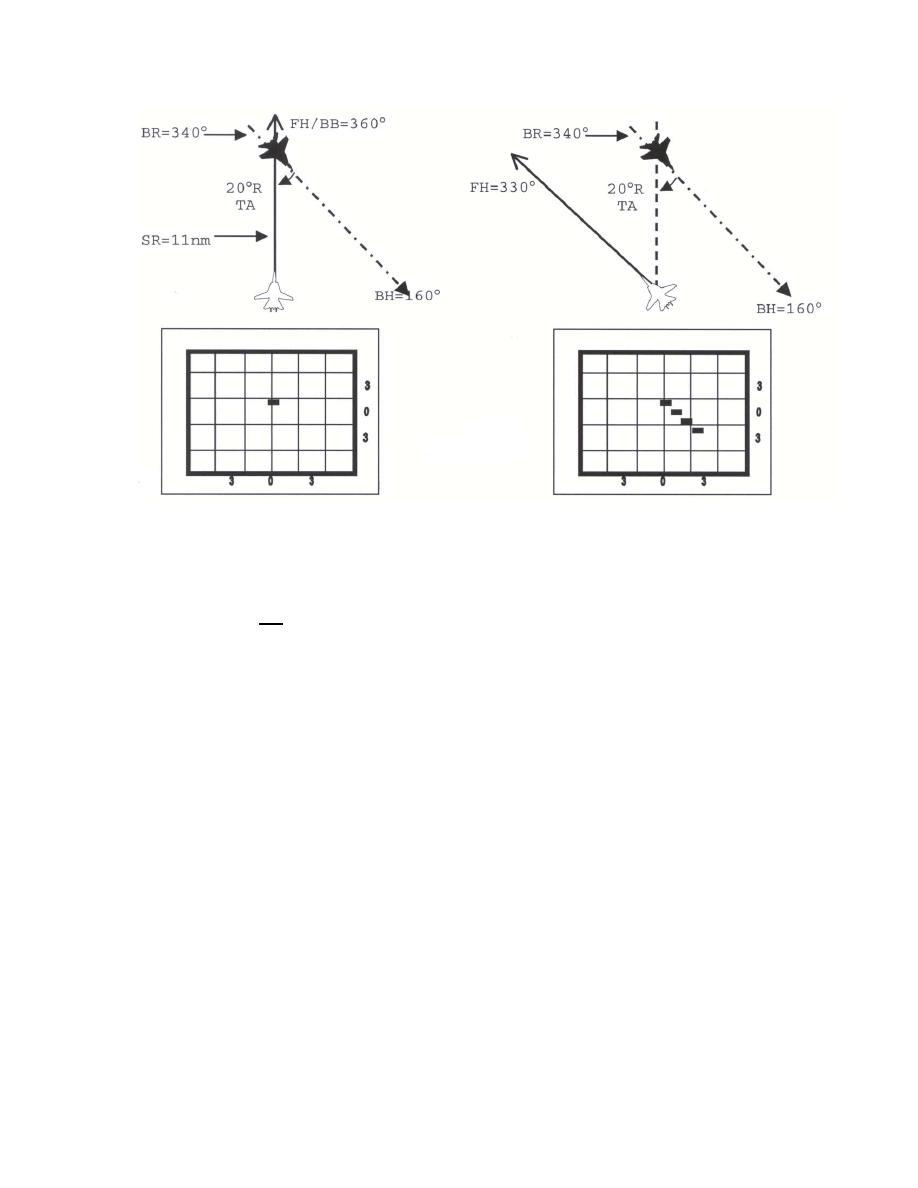 |
|||
|
|
|||
|
|
|||
| ||||||||||
|
|  INTERCEPT PROCEDURES TEXTBOOK
Figure 2
Note on the above example:
(1)
Bogey was not on CB at displacement range.
(2)
20R TA displaced to appropriate AO (30R).
(3)
DTG > 180
after DT, allowing a small amount of LD to be gained.
(4)
When the fighter begins a right CT, it will pass 180 DTG (340) almost immediately
while bringing the bogey to the nose.
Final Phase of the Reattack/Pursuit Intercept
Up until displacement range, proper target aspect analysis is the number one priority.
However, once the fighter breaks collision course with the displacement turn and begins the
counterturn sequence, TA will be constantly changing. The aircrew can now dismiss target
aspect for the reattack phase of the intercept as proper drift control becomes the primary task. In
situations with 0-15 degrees TA, it must be remembered that no inward drift can be accepted
prior to passing the 180 DTG position in the CT. During the CT with 20 TA or greater, no more
LD can be gained, and the bogey can be allowed to drift to the nose.
Remember that the fighter is striving to arrive at a "window" in space: Bogey on the nose at
2 nm with 90 DTG and, if the bogey is locked, a ROC roughly equal to that of the fighter
aircraft, (300 kts here at VT-86). As the ROC approaches 300 kts, the fighter is approaching the
beam area of the bogey and drift rates will increase. A buster should be used if necessary to
assure proper roll out distance.
87
|
|
Privacy Statement - Press Release - Copyright Information. - Contact Us |